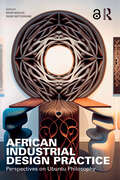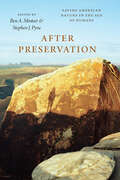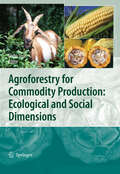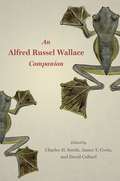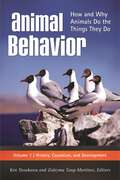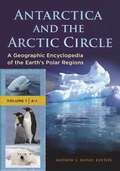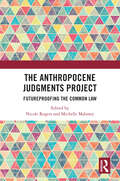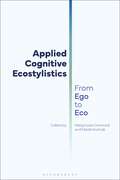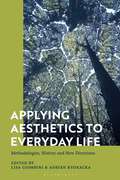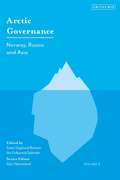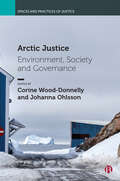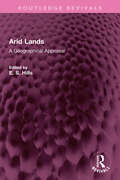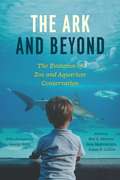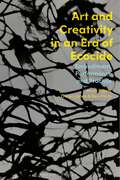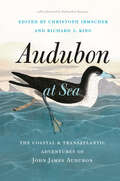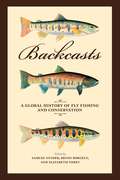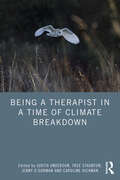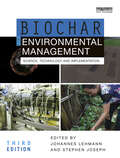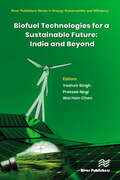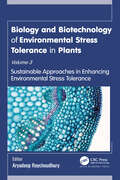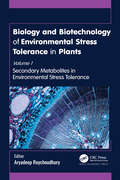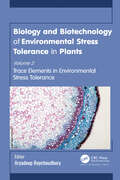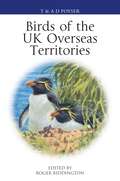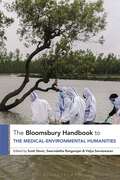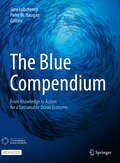- Table View
- List View
African Industrial Design Practice: Perspectives on Ubuntu Philosophy
The underlying principle of this book is the African philosophy of Ubuntu, which acts as a guide for developing empathic products and services. The book makes the case that empathy is the key to any successful product and service design project because it enables designers to make wise design choices that align with users' demands.Fifteen chapters provide the latest industrial design developments, techniques, and processes explicitly targeting emerging economies. At the outset, it covers the design context and the philosophy of the Ubuntu approach, which places people and communities at the centre of the development agenda. The book covers new product development, design research, design cognition, digital and traditional prototyping, bringing products to the market, establishing a company's brand name, intellectual property rights, traditional knowledge, and the business case for design in Afrika. It concludes with a discussion about the future of design and the skills aspiring designers will need.African Industrial Design Practice: Perspectives on Ubuntu Philosophy will be an essential textbook for undergraduates, postgraduates, instructors, and beginner designers in emerging economies to provide regionally contextualised design processes, illustrated examples, and outcomes.Chapter 2 of this book is freely available as a downloadable Open Access PDF at http://www.taylorfrancis.com under a Creative Commons Attribution-Non Commercial-No Derivatives (CC-BY-NC-ND) 4.0 license.
After Preservation: Saving American Nature in the Age of Humans
From John Muir to David Brower, from the creation of Yellowstone National Park to the Endangered Species Act, environmentalism in America has always had close to its core a preservationist ideal. Generations have been inspired by its ethos—to encircle nature with our protection, to keep it apart, pristine, walled against the march of human development. But we have to face the facts. Accelerating climate change, rapid urbanization, agricultural and industrial devastation, metastasizing fire regimes, and other quickening anthropogenic forces all attest to the same truth: the earth is now spinning through the age of humans. After Preservation takes stock of the ways we have tried to both preserve and exploit nature to ask a direct but profound question: what is the role of preservationism in an era of seemingly unstoppable human development, in what some have called the Anthropocene? Ben A. Minteer and Stephen J. Pyne bring together a stunning consortium of voices comprised of renowned scientists, historians, philosophers, environmental writers, activists, policy makers, and land managers to negotiate the incredible challenges that environmentalism faces. Some call for a new, post-preservationist model, one that is far more pragmatic, interventionist, and human-centered. Others push forcefully back, arguing for a more chastened and restrained vision of human action on the earth. Some try to establish a middle ground, while others ruminate more deeply on the meaning and value of wilderness. Some write on species lost, others on species saved, and yet others discuss the enduring practical challenges of managing our land, water, and air. From spirited optimism to careful prudence to critical skepticism, the resulting range of approaches offers an inspiring contribution to the landscape of modern environmentalism, one driven by serious, sustained engagements with the critical problems we must solve if we—and the wild garden we may now keep—are going to survive the era we have ushered in. Contributors include: Chelsea K. Batavia, F. Stuart (Terry) Chapin III, Norman L. Christensen, Jamie Rappaport Clark, William Wallace Covington, Erle C. Ellis, Mark Fiege, Dave Foreman, Harry W. Greene, Emma Marris, Michelle Marvier, Bill McKibben, J. R. McNeill, Curt Meine, Ben A. Minteer, Michael Paul Nelson, Bryan Norton, Stephen J. Pyne, Andrew C. Revkin, Holmes Rolston III, Amy Seidl, Jack Ward Thomas, Diane J. Vosick, John A. Vucetich, Hazel Wong, and Donald Worster.
Agroforestry for Commodity Production: Ecological and Social Dimensions
Agroforestry systems have been touted as sustainable production systems that alleviate many of the environmental problems associated with modern production systems. Are they indeed ecologically and economically sustainable? Using case studies from around the globe, this book highlights the potential of agroforestry systems to produce a broad range of commodities. In addition to addressing the biophysical and socioeconomic dimensions of producing traditional food, fodder and fiber crops, this volume examines the potential to integrate biomass crops, botanicals and ornamental plants into agroforestry practices. The book should be particularly useful to students, professionals, researchers and policy makers involved in natural resource management, agroforestry, and environmental management.
An Alfred Russel Wallace Companion
Although Alfred Russel Wallace (1823–1913) was one of the most famous scientists in the world at the time of his death at the age of ninety, today he is known to many as a kind of “almost-Darwin,” a secondary figure relegated to the footnotes of Darwin’s prodigious insights. But this diminution could hardly be less justified. Research into the life of this brilliant naturalist and social critic continues to produce new insights into his significance to history and his role in helping to shape modern thought. Wallace declared his eight years of exploration in southeast Asia to be “the central and controlling incident” of his life. As 2019 marks one hundred and fifty years since the publication of The Malay Archipelago, Wallace’s canonical work chronicling his epic voyage, this collaborative book gathers an interdisciplinary array of writers to celebrate Wallace’s remarkable life and diverse scholarly accomplishments. Wallace left school at the age of fourteen and was largely self-taught, a voracious curiosity and appetite for learning sustaining him throughout his long life. After years as a surveyor and builder, in 1848 he left Britain to become a professional natural history collector in the Amazon, where he spent four years. Then, in 1854, he departed for the Malay Archipelago. It was on this voyage that he constructed a theory of natural selection similar to the one Charles Darwin was developing, and the two copublished papers on the subject in 1858, some sixteen months before the release of Darwin’s On the Origin of Species. But as the contributors to the Companion show, this much-discussed parallel evolution in thought was only one epoch in an extraordinary intellectual life. When Wallace returned to Britain in 1862, he commenced a career of writing on a huge range of subjects extending from evolutionary studies and biogeography to spiritualism and socialism. An Alfred Russel Wallace Companion provides something of a necessary reexamination of the full breadth of Wallace’s thought—an attempt to describe not only the history and present state of our understanding of his work, but also its implications for the future.
Animal Behavior [3 volumes]: How and Why Animals Do the Things They Do [3 volumes]
Discover why animals do what they do, based on their genes, physiologies, cultures, traditions, survival and mating advantages, and evolutionary histories—and find out how studying behavior in the animal world helps us understand human behavior.The three volumes of Animal Behavior: How and Why Animals Do the Things They Do cover the breadth of the field, addressing causation, development, function, and evolution in a wide range of animals, from invertebrates to humans. Inspired by Nobel laureate Nikolaas Tinbergen's work, the first two volumes follow Tinbergen's four classic questions of animal behavior, while the third volume supplies integrated examples of Tinbergen's investigative process applied in specific cases.Written in an engaging, accessible manner ideal for college students as well as general audiences, this evidence-based collection provides a fascinating tour of animal behaviorists' findings, such as how animal communication can be truthful or deceitful, the deadly serious business behind clashes in the "battle of the sexes," and how documentation of animal behavior can lead to a deeper understanding of human behavior. Each chapter provides both historical background and information about current developments in animal behavior knowledge.
Antarctica and the Arctic Circle [2 volumes]: A Geographic Encyclopedia of the Earth's Polar Regions [2 volumes]
This one-stop reference is a perfect resource for anyone interested in the North and South Poles, whether their interest relates to history, wildlife, or the geography of these regions in the news today.Global warming, a hot topic among scholars of geography and science, has led to increased interest in studying the earth's polar ice caps, which seem to be melting at an alarming rate. This accessible, two-volume encyclopedia lays a foundation for understanding global warming and other issues related to the North and South Poles. Approximately 350 alphabetically arranged, user-friendly entries treat key terms and topics, important expeditions, major figures, territorial disputes, and much more.Readers will find information on the explorations of Cook, Scott, Amundsen, and Peary; articles on humpback whales, penguins, and polar bears; and explanations of natural phenomena like the Aurora Australis and the polar night. Expedition tourism is covered, as is climate change. Ideal for high school and undergraduate students studying geography, social studies, history, and earth science, the encyclopedia will provide a better understanding of these remote and unfamiliar lands and their place in today's world.
The Anthropocene Judgments Project: Futureproofing the Common Law
This book is a collection of speculative judgments that, along with accompanying commentaries, pursue a novel enquiry into how judges might respond to the formidable and planetary-scaled challenges of the Anthropocene. The book’s contributors –from Australia, Asia, Europe, and the United Kingdom –take up a range of issues: including multispecies justice, the challenges of intergenerational justice, dimensions of postcolonial justice, the potential contribution of AI platforms to the judgment process, and the future of judging and law in and beyond the Anthropocene. The project takes its inspiration from existing critical judgment projects. It is, however, thoroughly interdisciplinary. In anticipating future scenarios, and designing or adapting legal principles to respond to them, the book’s contributors have been assisted by climate scientists with expertise in future modelling; they have benefitted from the experience of fiction writers in future worldbuilding; and they have incorporated elements of the future worlds depicted in various texts of speculative fiction and artworks. The judgments are, of necessity, speculative and hypothetical in their subject matter. Thus, taken together, they constitute a collaborative experiment in creating the inclusive and radical imaginaries of the future common law. The Anthropocene Judgments Project will appeal to critical and sociolegal academics, scholars in the environmental humanities, environmental lawyers, students, and others with interests in the pressing issues of ecology, multispecies justice, climate change, the intersection of AI platforms and the law, and the future of law in the Anthropocene.
Applied Cognitive Ecostylistics: From Ego to Eco
This book offers an up-to-date account of one of the most influential strands of eco-research: cognitive ecostylistics. The onset of the 1970s saw a global shift in scholarly perspective upon the relation between egocentric and ecocentric views of the world. The so-called eco-turn was not only linguistic at its roots, but engaged the bulk of academic thought in social sciences and humanities. Cognitive ecostylistics invites a multidisciplinary approach to the study of the conceptual relations between oral or written texts and their impact on the environment. This volume is a collection of the latest research that seeks to apply the theory and methodology developed over the last 40 years to both literary and real-life texts, engaging with a wealth of examples from First World War poetry and Anne of Green Gables through to Condé Nast Traveller hotel descriptions. Exploring the cultural effects of the eco-turn, the collection engages the reader in the problem of the present-day Anthropocene, manifested as Ego-Eco tensions at the level of communicating self-needs and the needs of the Other. Divided into two parts, it considers first the human-angled semiotic interplay contained within the universe of people, before examining the problem of semiotic engagement of texts as extraneous to the human, highlighting crucial aspects of nature, culture, and beyond.
Applying Aesthetics to Everyday Life: Methodologies, History and New Directions
Applying Aesthetics to Everyday Life surveys current debates in the field of everyday aesthetics, examining its history, methodology and intersections with cognate research areas. Lisa Giombini and Adrián Kvokacka bring together an international team of renowned scholars who are shaping the present and future of the discipline. They demonstrate how the historical origins of everyday aesthetics emerges across the history of Western aesthetic thought, from Renaissance thinkers to the modern German philosophers Baumgarten, Kant and Heidegger. Chapters shed light on the field's methodological underpinnings, tracing its theoretical foundations back to epistemology and ethics and assess the potential of everyday aesthetics as a theoretical tool. They reveal its interdisciplinary nature and how it assists various fields of inquiry, including environmental and urban aesthetics, conservation ethics and the philosophy of art. Through fresh explorations of its origins, background and contemporary developments, this collection advances a new definition of everyday aesthetics and provides a cutting edge reflection on the world we inhabit today.
Arctic Governance: Norway, Russia and Asia (Arctic Governance)
The Polar North is known to be home to large gas and oil reserves and its position holds significant trading and military advantages, yet the maritime boundaries of the region remain ill-defined. In the twenty-first century the Arctic is undergoing profound change. As the sea ice melts, a result of accelerating climate change, global governance has become vital. In this, the third of three volumes, the latest research and analysis from the world's leading Arctic research body - the Fridtjof Nansen Institute - is brought together for the first time. Arctic Governance: Norway, Russia and Asia investigates the foreign policy discourses of Arctic governance, specifically as regarding international relations and competing interests between Norway, Russia and various Asian states.
Arctic Justice: Environment, Society and Governance
EPDF and EPUB available Open Access under CC-BY-NC-ND licence. Offering a unique introduction to the study of justice in the European, North American and Russian Arctic, this collection considers the responsibilities and failures of justice for environment and society in the region. Inspired by key thinkers in justice, this book highlights the real and practical consequences of postcolonial legacies, climate change and the regions’ incorporation into the international political economy. The chapters feature liberal, cosmopolitan, feminist, as well as critical justice perspectives from experts with decades of research experience in the Arctic. Moving from a critique of current failures, the collection champions a just and sustainable future for Arctic development and governance.
Arid Lands: A Geographical Appriasal (Routledge Revivals)
In 1951 UNESCO launched an Arid Zone Programme with the object of promoting research into arid regions from every relevant scientific point of view. This book, originally published in 1966, represents the range of research undertaken and gives a general conspectus of arid zone geography. 17 authors from 8 countries contributed and the book deals comprehensively with all the main areas, with specific examples used to illustrate arguments. There are chapters on meteorology, geology, geomorphology, botany and zoology and almost 50% of the book is devoted to man’s activities: irrigation and agriculture; industry; animal breeding and human survival in the desert
The Ark and Beyond: The Evolution of Zoo and Aquarium Conservation (Convening Science: Discovery at the Marine Biological Laboratory)
Scores of wild species and ecosystems around the world face a variety of human-caused threats, from habitat destruction and fragmentation to rapid climate change. But there is hope, and it, too, comes in a most human form: zoos and aquariums. Gathering a diverse, multi-institutional collection of leading zoo and aquarium scientists as well as historians, philosophers, biologists, and social scientists, The Ark and Beyond traces the history and underscores the present role of these organizations as essential conservation actors. It also offers a framework for their future course, reaffirming that if zoos and aquariums make biodiversity conservation a top priority, these institutions can play a vital role in tackling conservation challenges of global magnitude. While early menageries were anything but the centers of conservation that many zoos are today, a concern with wildlife preservation has been an integral component of the modern, professionally run zoo since the nineteenth century. From captive breeding initiatives to rewilding programs, zoos and aquariums have long been at the cutting edge of research and conservation science, sites of impressive new genetic and reproductive techniques. Today, their efforts reach even further beyond recreation, with educational programs, community-based conservation initiatives, and international, collaborative programs designed to combat species extinction and protect habitats at a range of scales. Addressing related topics as diverse as zoo animal welfare, species reintroductions, amphibian extinctions, and whether zoos can truly be “wild,” this book explores the whole range of research and conservation practices that spring from zoos and aquariums while emphasizing the historical, scientific, and ethical traditions that shape these efforts. Also featuring an inspiring foreword by the late George Rabb, president emeritus of the Chicago Zoological Society / Brookfield Zoo, The Ark and Beyond illuminates these institutions’ growing significance to the preservation of global biodiversity in this century.
Art and Creativity in an Era of Ecocide: Embodiment, Performance and Practice
What can creativity achieve in an era of ecocide? How are people using creative and artistic practices to engage with (and resist) the destruction of life on earth? What are the relationships between creativity and repair in the face of escalating global environmental crises? Across twelve compelling case studies, this book charts the emergence of diverse forms of artistic practice and brings together accounts of how artists, scholars and activists are creatively responding to environmental destruction.Highlighting alternative approaches to creativity in both conventional art settings and daily life, the book demonstrates the major influence that ecological thought has had on contemporary creative practices. These are often more concerned with subtle processes of feeling, experience and embodiment than they are with charismatic 'eco-art' works. In doing so, this exploratory book develops a conception of creativity as an anti-ecocide endeavour, and provides timely theoretical and practical insights on art in an age of environmental destruction.
Audubon at Sea: The Coastal and Transatlantic Adventures of John James Audubon
This one-of-a-kind, lavishly illustrated anthology celebrates Audubon’s connection to the sea through both his words and art. The American naturalist John James Audubon (1785–1851) is widely remembered for his iconic paintings of American birdlife. But as this anthology makes clear, Audubon was also a brilliant writer—and his keen gaze took in far more than creatures of the sky. Culled from his published and unpublished writings, Audubon at Sea explores Audubon’s diverse observations of the ocean, the coast, and their human and animal inhabitants. With Audubon expert Christoph Irmscher and scholar of the sea Richard J. King as our guides, we set sail from the humid expanses of the American South to the shores of England and the chilly landscapes of the Canadian North. We learn not only about the diversity of sea life Audubon documented—birds, sharks, fish, and whales—but also about life aboard ship, travel in early America, Audubon’s work habits, and the origins of beloved paintings. As we face an unfathomable loss of seabirds today, Audubon’s warnings about the fragility of birdlife in his time are prescient and newly relevant. Charting the course of Audubon’s life and work, from his birth in Haiti to his death in New York City, Irmscher and King’s sweeping introduction and carefully drawn commentary confront the challenges Audubon’s legacy poses for us today, including his participation in American slavery and the thousands of birds he killed for his art. Rounded out by hundreds of historical and ornithological notes and beautiful illustrations, and with a foreword by distinguished photographer and conservationist Subhankar Banerjee, Audubon at Sea is the most comprehensively annotated collection of Audubon’s work ever published.
Backcasts: A Global History of Fly Fishing and Conservation
“Many of us probably would be better fishermen if we did not spend so much time watching and waiting for the world to become perfect.”-Norman Maclean Though Maclean writes of an age-old focus of all anglers—the day’s catch—he may as well be speaking to another, deeper accomplishment of the best fishermen and fisherwomen: the preservation of natural resources. Backcasts celebrates this centuries-old confluence of fly fishing and conservation. However religious, however patiently spiritual the tying and casting of the fly may be, no angler wishes to wade into rivers of industrial runoff or cast into waters devoid of fish or full of invasive species like the Asian carp. So it comes as no surprise that those who fish have long played an active, foundational role in the preservation, management, and restoration of the world’s coldwater fisheries. With sections covering the history of fly fishing; the sport’s global evolution, from the rivers of South Africa to Japan; the journeys of both native and nonnative trout; and the work of conservation organizations such as the Federation of Fly Fishers and Trout Unlimited, Backcasts casts wide. Highlighting the historical significance of outdoor recreation and sports to conservation in a collection important for fly anglers and scholars of fisheries ecology, conservation history, and environmental ethics, Backcasts explores both the problems anglers and their organizations face and how they might serve as models of conservation—in the individual trout streams, watersheds, and landscapes through which these waters flow.
Being a Therapist in a Time of Climate Breakdown
This book introduces readers to the known psychological aspects of climate change as a pressing global concern and explores how they are relevant to current and future clinical practice.Arguing that it is vital for ecological concerns to enter the therapy room, this book calls for change from regulatory bodies, training institutes and individual practitioners. The book includes original thinking and research by practitioners from a range of perspectives, including psychodynamic, eco-systemic and integrative. It considers how our different modalities and ways of working need to be adapted to be applicable to the ecological crises. It includes Voices from people who are not practitioners about their experience including how they see the role of therapy. Chapters deal with topics from climate science, including the emotional and mental health impacts of climate breakdown, professional ethics and wider systemic understandings of current therapeutic approaches. Also discussed are the practice-based implications of becoming a climate-aware therapist, eco-psychosocial approaches and the inextricable links between the climate crises and racism, colonialism and social injustice. Being a Therapist in a Time of Climate Breakdown will enable therapists and mental health professionals across a range of modalities to engage with their own thoughts and feelings about climate breakdown and consider how it both changes and reinforces aspects of their therapeutic work.
Biochar for Environmental Management: Science, Technology and Implementation
Fully revised and updated for its third edition, this book presents the definitive compilation of current knowledge on all aspects of biochar.Research on biochar continues to accelerate as its importance for soil health, climate change mitigation and adoption, and the circular economy becomes more widely acknowledged. This book not only reviews recent advances made in our understanding of biochar properties, behavior, and effects in agriculture, environmental management, and material production, but specifically develops fundamental principles and frameworks of biochar science and application. This third edition has been fully revised and updated to reflect recent developments and growing trends, with important coverage of the application of biochar outside of its traditional soil-based uses, the commercialization of biochar, and its incorporation into policy. This includes brand new chapters on the role of biochar-based materials for environmental remediation, building construction, and animal feed, and a greater discussion of biochar's role in the circular economy, climate change mitigation, and sustainable development. Overall, this book provides a systematic, comprehensive, and global examination of biochar. Written by an international team of academics and professionals, it addresses its uses, production, and management and its broader potential for mitigating climate change and driving forward sustainable development.Edited by two leading figures in the field, Biochar for Environmental Management is essential reading for students, scholars, practitioners, and policymakers interested in biochar and the role it can play in environmental sustainability and global sustainable development.
Biofuel Technologies for a Sustainable Future: India and Beyond
This book examines the key aspects that will define future sustainable energy systems: biofuels, green nanomaterials and the production of bioethanol and bio-hydrogen from bio-waste. Bio-based fuels are the future energy carriers for internal combustion engines as they have lower environmental impact and higher efficiency. The book clearly illustrates the requirement for a unified engineering approach based on solid mathematical and engineering principles. Aside from the ecological advantages, support for sustainable energy can help the socioeconomic situation of developing countries by providing a consistent supply of new energy along with the generation of new job opportunities. The sustainable energy applications and existing contextual investigations provide useful guidance for the broad comprehension of the significance of sustainable energy. Technical topics discussed in the book include: Thermochemical Conversion process; Catalytic conversion process; Rankine cycle; Nanomaterials;
Biology and Biotechnology of Environmental Stress Tolerance in Plants: Volume 3: Sustainable Approaches for Enhancing Environmental Stress Tolerance
Abiotic stresses such as drought, high salt, cold, heat, UV radiation, heavy metal pollution, etc., are increasingly responsible for restricting plant growth and agricultural production and are becoming more alarming due to threats from global climate change. To combat these threats, this new 3-volume set provides a comprehensive understanding of the mechanisms that mediate biosynthesis, accumulation, and degradation of plant metabolites to improve crop production and enhance abiotic stress tolerance in plants. Volume 1: Secondary Metabolites in Environmental Stress Tolerance focuses exclusively on the diverse secondary metabolites that play a major role in the adaptation of plants to the environment and in overcoming stress conditions as well as their implications for enhancing tolerance mechanisms. The book presents information on the protective role rendered by a wide array of antioxidative secondary metabolites and their regulation during diverse environmental stress. Volume 2: Trace Elements in Environmental Stress Tolerance throws light on the different inorganic trace elements, including metal nanoparticles, that help to deal with environmental stresses. While these elements at high level create considerable phytotoxicity and halt metabolic and enzymatic activity, they also promote growth and development in limited quantity, so that they have significant potential in revamping plant morphology and physiology under stressed conditions. Hence, optimum concentration management of these elements can help to mitigate world hunger and contribute toward sustainable agriculture and food security under challenging environments. Volume 3: Sustainable Approaches for Enhancing Environmental Stress Tolerance focuses on the agronomic and biochemical approaches as well as biotechnological and high-throughput technologies, including the prospects of genetic engineering, epigenetics and the latest CRISPR/Cas technology, in generating stress-tolerant plants. The volume provides a clear roadmap for the implementation of techniques for improving abiotic stress tolerance in plants for better sustenance.
Biology and Biotechnology of Environmental Stress Tolerance in Plants: Volume 1: Secondary Metabolites in Environmental Stress Tolerance
Abiotic stresses such as drought, high salt, cold, heat, UV radiation, heavy metal pollution, etc., are increasingly responsible for restricting plant growth and agricultural production and are becoming more alarming due to threats from global climate change. To combat these threats, this new 3-volume set provides a comprehensive understanding of the mechanisms that mediate biosynthesis, accumulation, and degradation of plant metabolites to improve crop production and enhance abiotic stress tolerance in plants. Volume 1: Secondary Metabolites in Environmental Stress Tolerance focuses exclusively on the diverse secondary metabolites that play a major role in the adaptation of plants to the environment and in overcoming stress conditions as well as their implications for enhancing tolerance mechanisms. The book presents available information on the protective roles rendered by a wide array of antioxidative secondary metabolites and their regulation during diverse environmental stress. Volume 2: Trace Elements in Environmental Stress Tolerance throws light on the different inorganic trace elements, including metal nanoparticles, that help to deal with environmental stresses. While these elements at high level create considerable phytotoxicity and halt metabolic and enzymatic activity, they also promote growth and development in limited quantity, so that they have significant potential in revamping plant morphology and physiology under stressed conditions. Hence, optimum concentration management of these elements can help to mitigate world hunger and contribute toward sustainable agriculture and food security under challenging environments. Volume 3: Sustainable Approaches for Enhancing Environmental Stress Tolerance focuses on the agronomic and biochemical approaches as well as biotechnological and high-throughput technologies, including the prospects of genetic engineering, epigenetics and the latest CRISPR/Cas technology, in generating stress-tolerant plants. The volume provides a clear roadmap for the implementation of techniques for improving abiotic stress tolerance in plants for better sustenance.
Biology and Biotechnology of Environmental Stress Tolerance in Plants: Volume 2: Trace Elements in Environmental Stress Tolerance
Abiotic stresses such as drought, high salt, cold, heat, UV radiation, heavy metal pollution, etc., are increasingly responsible for restricting plant growth and agricultural production and are becoming more alarming due to threats from global climate change. To combat these threats, this new 3-volume set provides a comprehensive understanding of the mechanisms that mediate biosynthesis, accumulation, and degradation of plant metabolites to improve crop production and enhance abiotic stress tolerance in plants. Volume 1: Secondary Metabolites in Environmental Stress Tolerance focuses exclusively on the diverse secondary metabolites that play a major role in the adaptation of plants to the environment and in overcoming stress conditions as well as their implications in enhancing tolerance mechanisms. The book presents information on the protective roles rendered by a wide array of antioxidative secondary metabolites and their regulation during diverse environmental stress. Volume 2: Trace Elements in Environmental Stress Tolerance throws light on the different inorganic trace elements, including metal nanoparticles, that help to deal with various environmental stresses. While these elements at high level create considerable phytotoxicity and halt metabolic and enzymatic activity, they also promote growth and development in limited quantity, so that they have significant potential in revamping plant morphology and physiology under stressed conditions. Hence, optimum concentration management of these elements can help to mitigate world hunger and contribute toward sustainable agriculture and food security under challenging environments. Volume 3: Sustainable Approaches for Enhancing Environmental Stress Tolerance focuses on agronomic and biochemical approaches as well as biotechnological and high-throughput technologies, including the prospects of genetic engineering, epigenetics and the latest CRISPR/Cas technology in generating stress-tolerant plants. The volume provides a clear roadmap for the implementation of techniques for improving abiotic stress tolerance in plants for better sustenance.
Birds of the UK Overseas Territories
The UK Overseas Territories (UKOTs) are scattered across the globe. Most are small islands or island complexes, occurring from the Caribbean to the furthest reaches of the South Atlantic, via the Indian and Pacific Oceans. In terms of global biodiversity, these territories are remarkably significant. Among landscapes that range from coral atolls, through mangroves and dry forests to the ice sheets of Antarctica, the UKOTs support no fewer than 45 species of birds currently considered to be globally threatened. They are also home to a third of all the world's breeding albatrosses, and nine of the world's 17 species of penguin. In a rapidly changing world, the UKOTs symbolise global crises in climate and biodiversity. Threats faced by their wildlife range from mortality of seabirds at sea through industrial fisheries, and on land as a result of introduced ground predators, to the utter devastation of hurricanes in the Caribbean, which provide a stark reminder of our changing climate. The human impact on the wildlife of our planet has been increasing for centuries, but the next few decades promise to be critical. This book explores the birds and other wildlife of each of the 14 UKOTs, with a particular focus on environmental threats and conservation priorities. Written by authors with a deep connection to the sites, this book represents an important stocktake of the biological richness of these special places in the early 21st century.
The Bloomsbury Handbook to the Medical-Environmental Humanities (Bloomsbury Handbooks)
Bringing together two parallel and occasionally intersecting disciplines - the environmental and medical humanities - this field-defining handbook reveals our ecological predicament to be a simultaneous threat to human health. The book: · Represents the first collection to bring the environmental humanities and medical humanities into conversation in a systematic way· Features contributions from a wide range of interdisciplinary perspectives including literary studies, environmental ethics and philosophy, cultural history and sociology · Adopts a truly global approach, examining contexts including, but not limited to, North America, the UK, Africa, Latin America, South Asia, Turkey and East Asia · Touches on issues and approaches such as narrative medicine, ecoprecarity, toxicity, mental health, and contaminated environments. Showcasing and surveying a rich spectrum of issues and methodologies, this book looks not only at where research currently is at the intersection of these two important fields, but also at where it is going.
The Blue Compendium: From Knowledge to Action for a Sustainable Ocean Economy
Home to over 80 percent of all life on Earth, the ocean is the world’s largest carbon sink and a key source of food and economic security for billions of people. The relevance of the ocean for humanity's future is undisputed. However, the ocean’s great potential to drive economic growth and equitable job creation, sustain healthy ecosystems, and mitigate climate change is not yet fully recognised. Lack of awareness of this potential as well as management and governance challenges pose impediments. Until these impediments are removed, ocean ecosystems will continue to be degraded and opportunities for people lost. A transition and a clear path to a thriving and vibrant relationship between humans and the ocean are urgently needed. This open access collection of papers and reports identifies a path that is inspired by science, energised by engaged people, and emboldened by visionary leaders. These assessments of knowledge are commissioned by the High Level Panel for a Sustainable Ocean Economy (Ocean Panel), which was established in September 2018 as a unique initiative led by heads of state and government from around the world, to showcase the latest leading-edge science, knowledge and state-of-the-art thinking on key ocean issues. Altogether, The Blue Compendium offers innovative ocean solutions in technology, policy, governance, and finance realms, that could help accelerate a transition to a more sustainable and prosperous relationship with the ocean. The comprehensive assessments have already informed policy making at the highest levels of government and motivated an impressive array of responsive and ambitious action across a growing network of leaders in business, finance and civil society.
